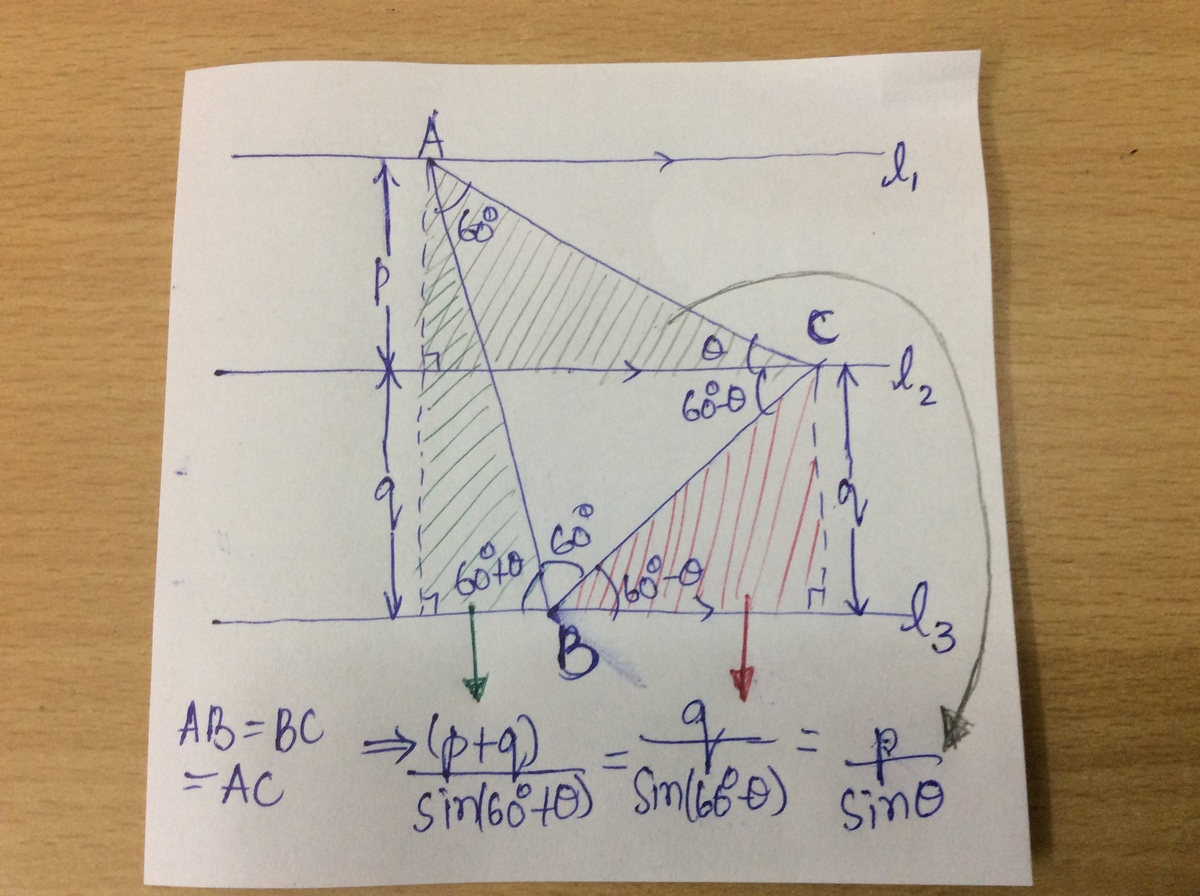Questionnaire
Please provide solutions if possible.
Happy Problem solving !!
Prove that in a right triangle, the bisector of right angle halves the angle between the median and the altitude drawn from the same vertex.
Prove that if in a triangle, the ratio of tangents of two angles is equal to the ratio of squares of the sines of these angles, then the triangle is either an isosceles or a right one.
Straight lines are parallel, lying between and at a distance of and from them. Find the size of a regular triangle whose vertices lie on the given lines (one on each line).
The diagonal of a rectangle divides its angle in the ratio . Find the ratio of the perimeter of the rectangle to its diagonal.
The acute angle of a parallelogram is equal to and the sides are and . Find the tangent of the acute angles formed by the larger diagonal and the sides of the parallelogram.
Easy Math Editor
This discussion board is a place to discuss our Daily Challenges and the math and science related to those challenges. Explanations are more than just a solution — they should explain the steps and thinking strategies that you used to obtain the solution. Comments should further the discussion of math and science.
When posting on Brilliant:
*italics*or_italics_**bold**or__bold__paragraph 1
paragraph 2
[example link](https://brilliant.org)> This is a quote# I indented these lines # 4 spaces, and now they show # up as a code block. print "hello world"\(...\)or\[...\]to ensure proper formatting.2 \times 32^{34}a_{i-1}\frac{2}{3}\sqrt{2}\sum_{i=1}^3\sin \theta\boxed{123}Comments
2) Given:tanBtanA=sin2Bsin2A
Proof:cosBsinBcosAsinA=sin2Bsin2A
⇒sin2A=sin2B 2A=2B or 2A=π-2B
Former one gives a isosceles triangle while latter case gives a right angled triangle.
Hint for 1) : Observe that the median ( with its foot on the hypotenuse ) to the right triangle divides it into 2 isosceles triangles [ Can you think why ? Does the converse hold true ? ]. Now, apply angle chasing, taking into consideration both the altitude and the angle bisector of right angle.
Here is the answer to the 4th question,
If p is perimeter and d is diagonal then-
dp=22cos(4(m+n)π(m−n))
Log in to reply
Can you explain your working ?
Log in to reply
Here is the solution-
Let ABCD be a rectangle stated in the question, with AB=a and BC=b and ∠BAC=2(m+n)πm and ∠DAC=2(m+n)πn,
Clearly p=2(a+b) and d=a2+b2,
dp=a2+b22(a+b)
Also cos∠BAC=a2+b2a and cos∠DAC=a2+b2b,
So,
dp=2(cos∠BAC+cos∠DAC)
I think rest you can do on your own, just place the values of angles and add them by identity
That was the fastest response I have ever seen on Brilliant! Just wait I am writing my solution.
Hint for 3) :